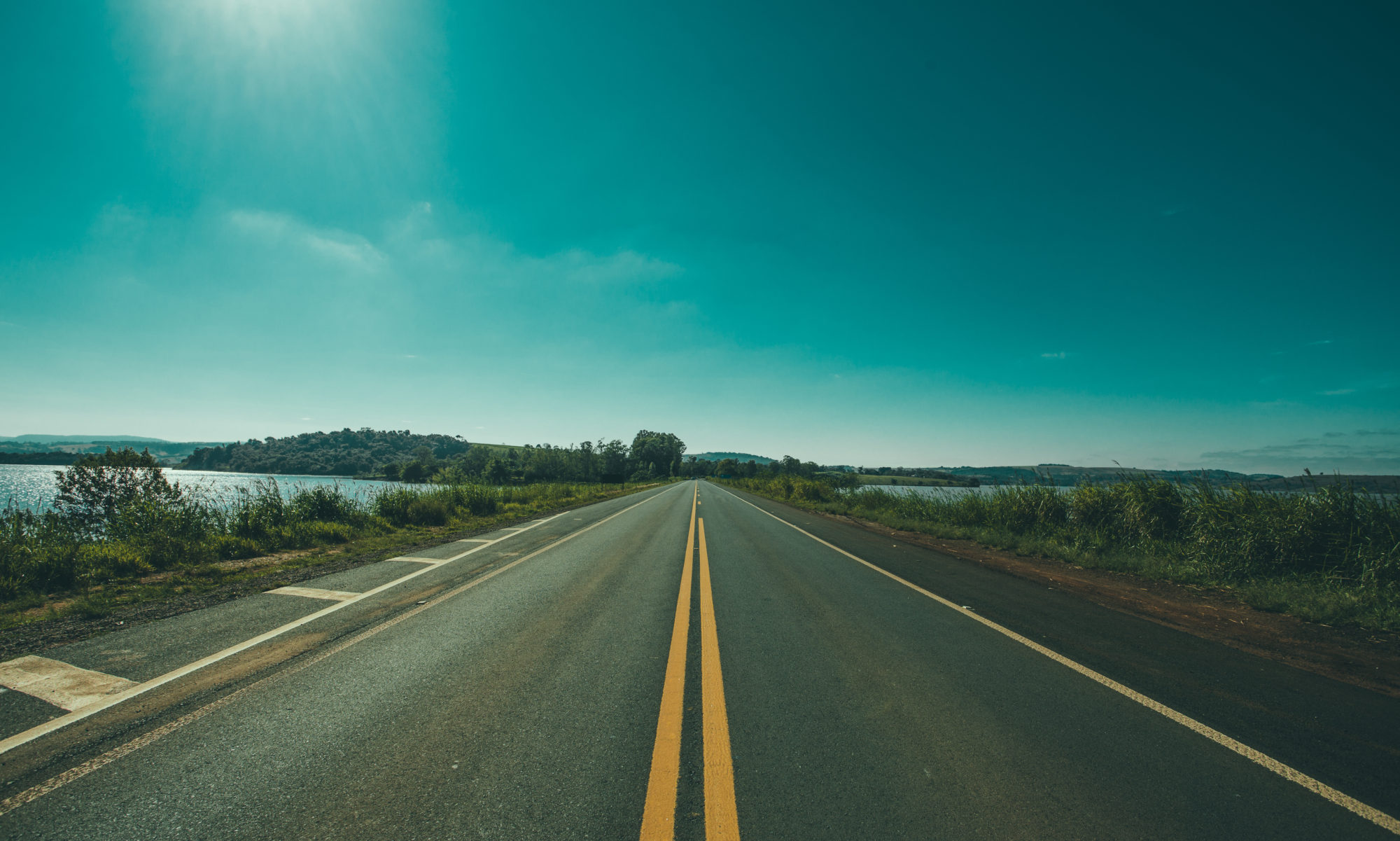Our last entry for Oman. From Al Hamra, we head to Jebel Shams, the highest mountain in Oman. On the way, we come across a local specialty: goat-hair carpets woven by local men.
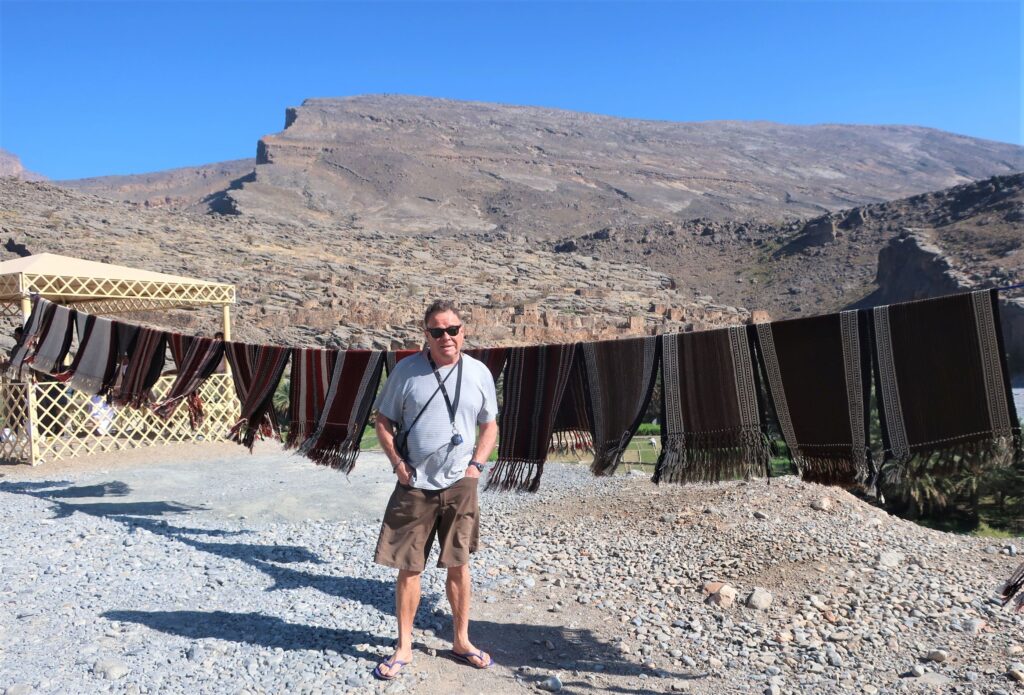
We want to do the Balcony Walk – a hike along the ‘Grand Canyon of Oman’.
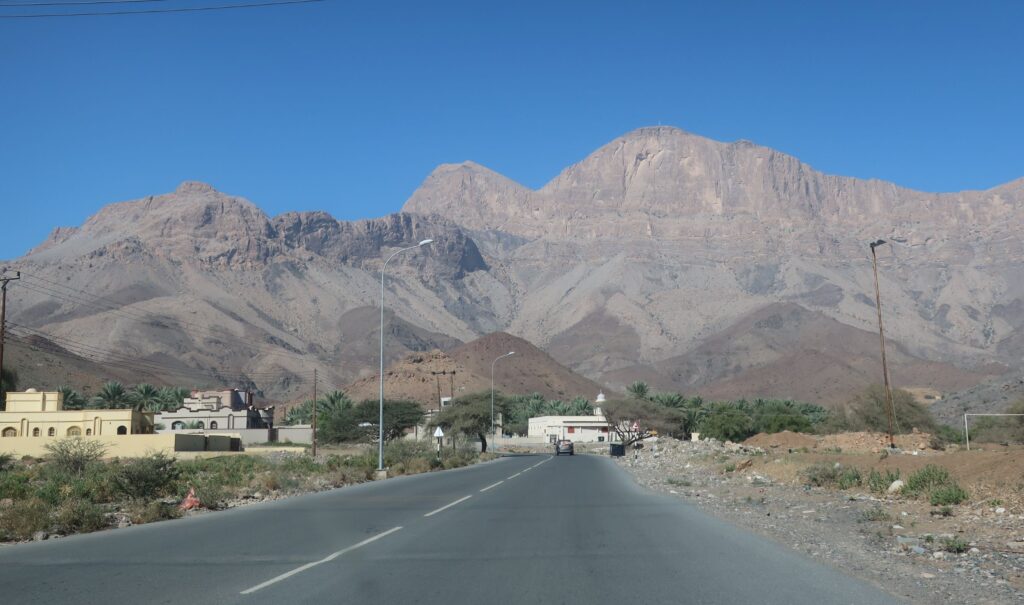
Jebel Shams means ‘sun mountain’.
On the road, we spot one of the ubiquitous blue trucks that deliver water to Omani households.
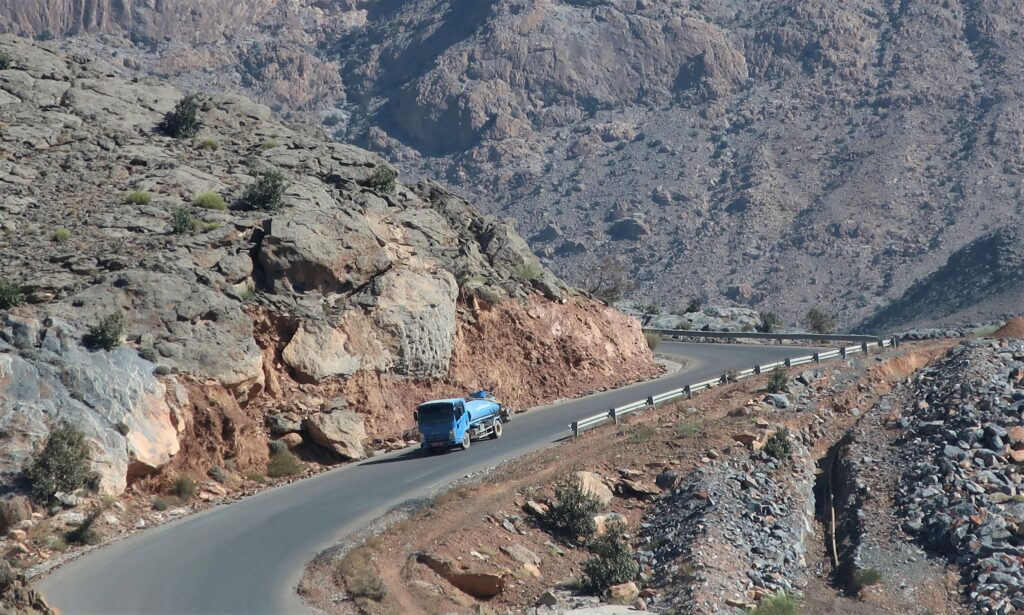
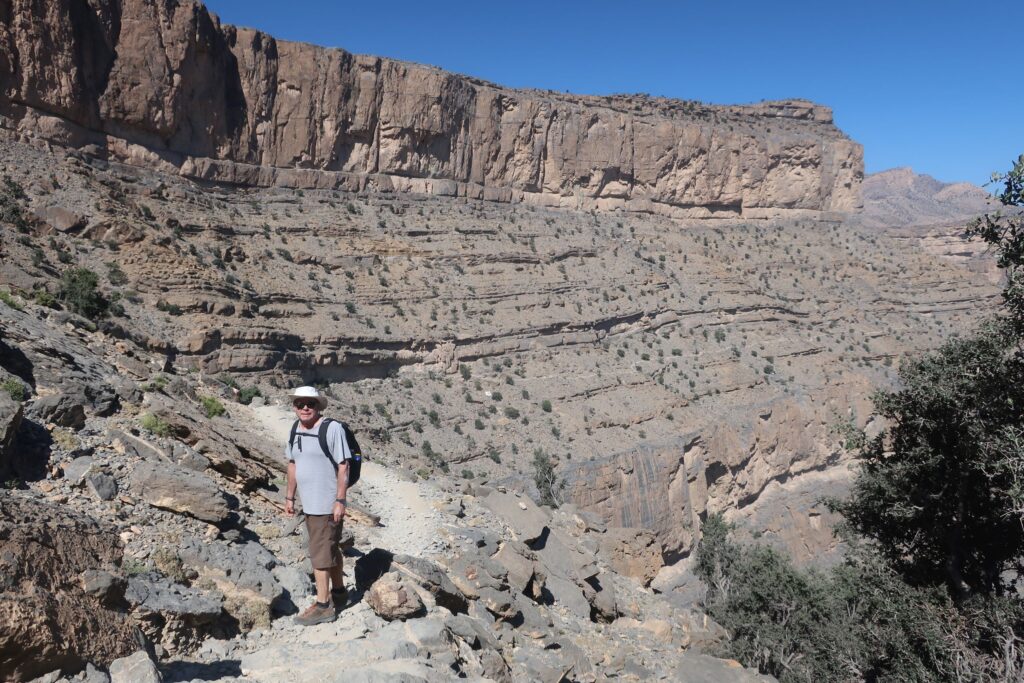
For most of the trek, you are only steps away from a long plunge to the bottom of the canyon.
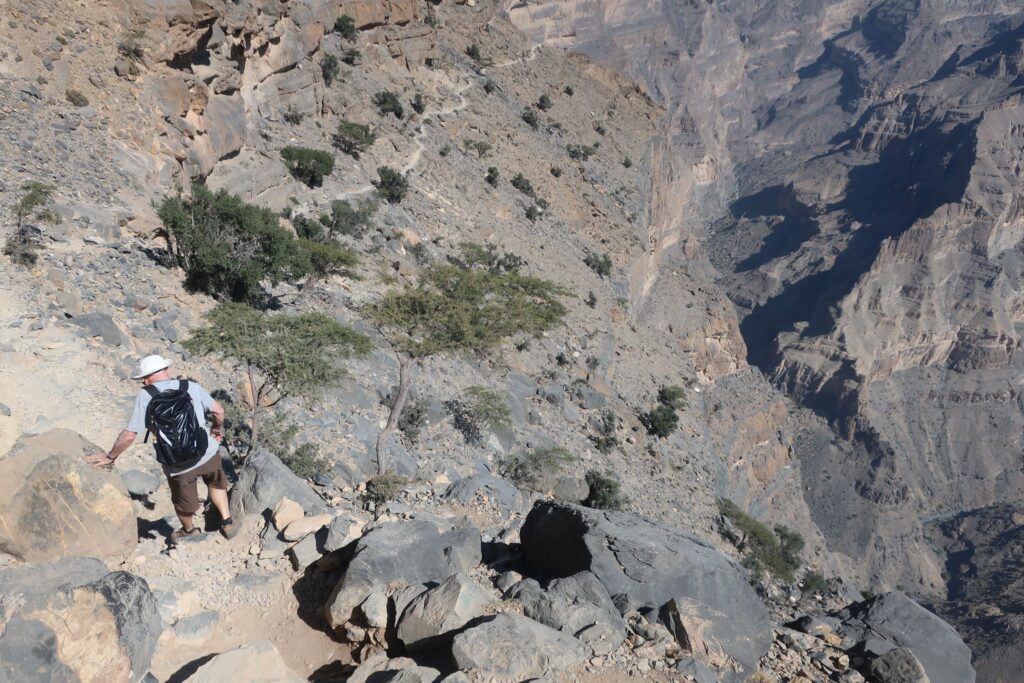
At the end of the trail is an abandoned village.
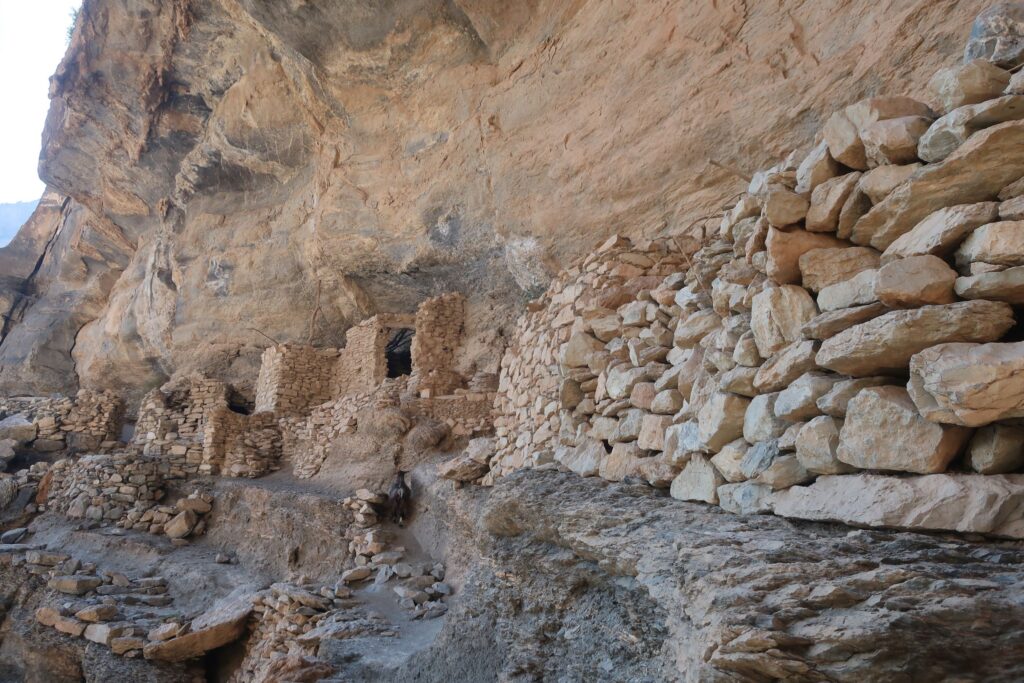
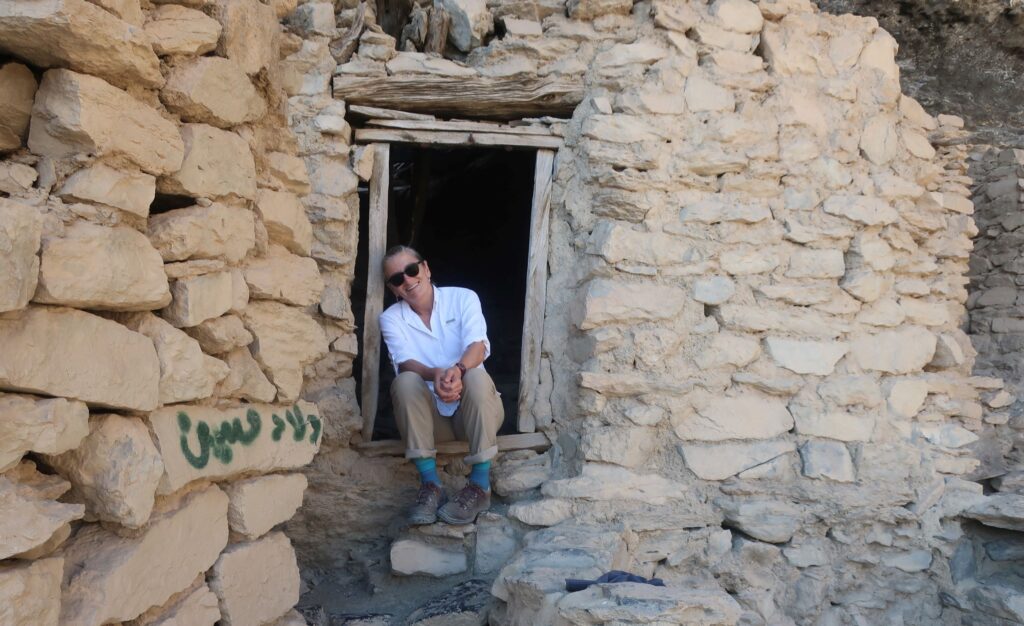
The place is the haunt of wild goats. They are obviously used to hikers sharing their provisions.
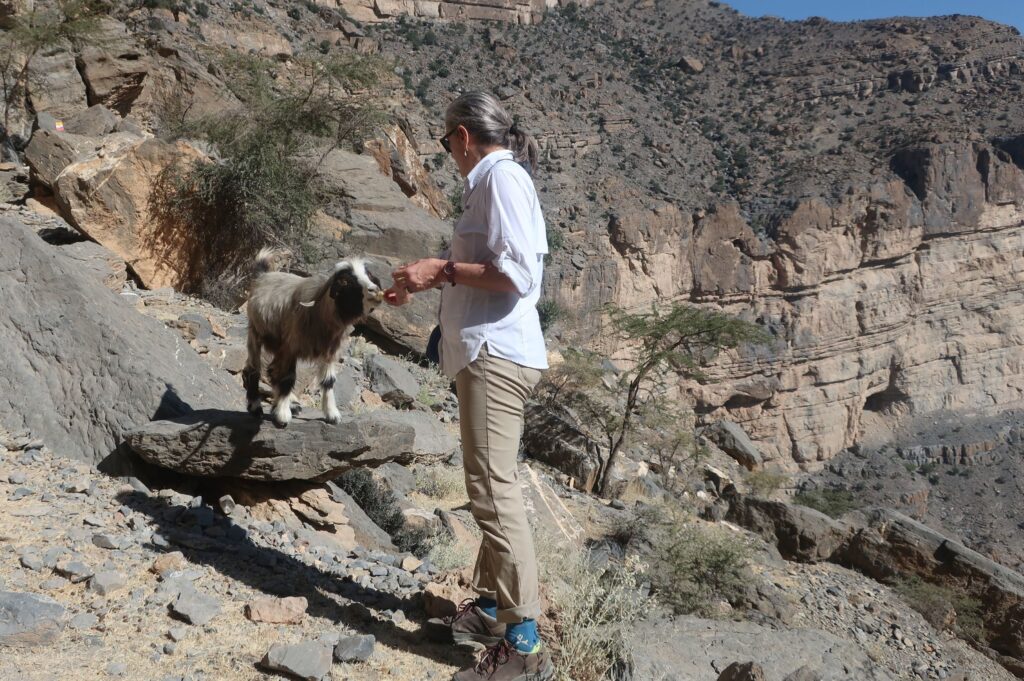
When we descend the mountain, we explore yet another abandoned village: Wadi Ghul.
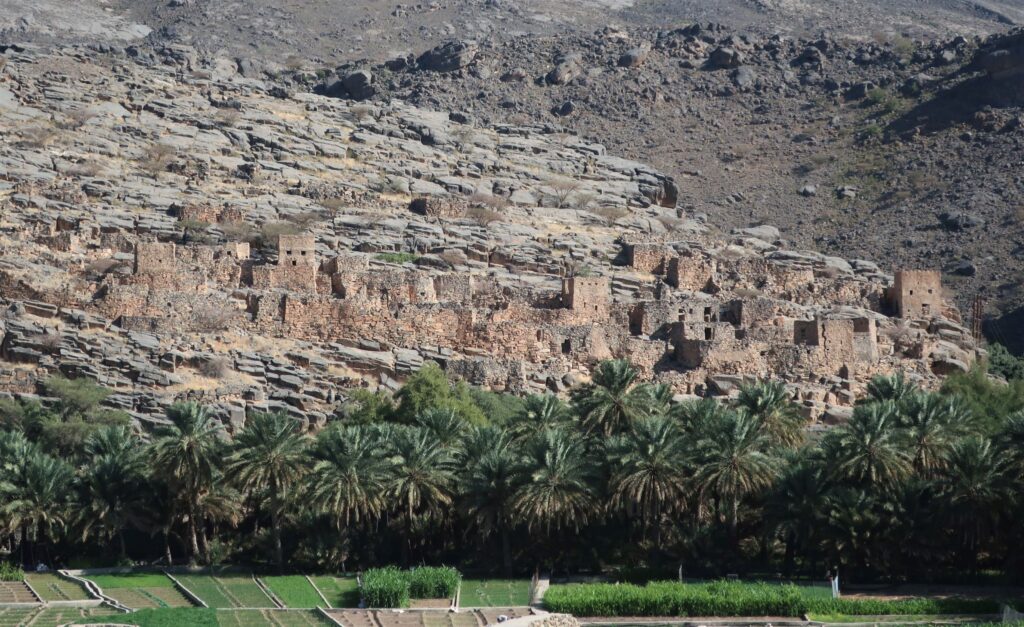
We think the simple explanation for the high number of abandoned villages in Oman is that people just found better places to live after the modernizations of the last half-century or so.
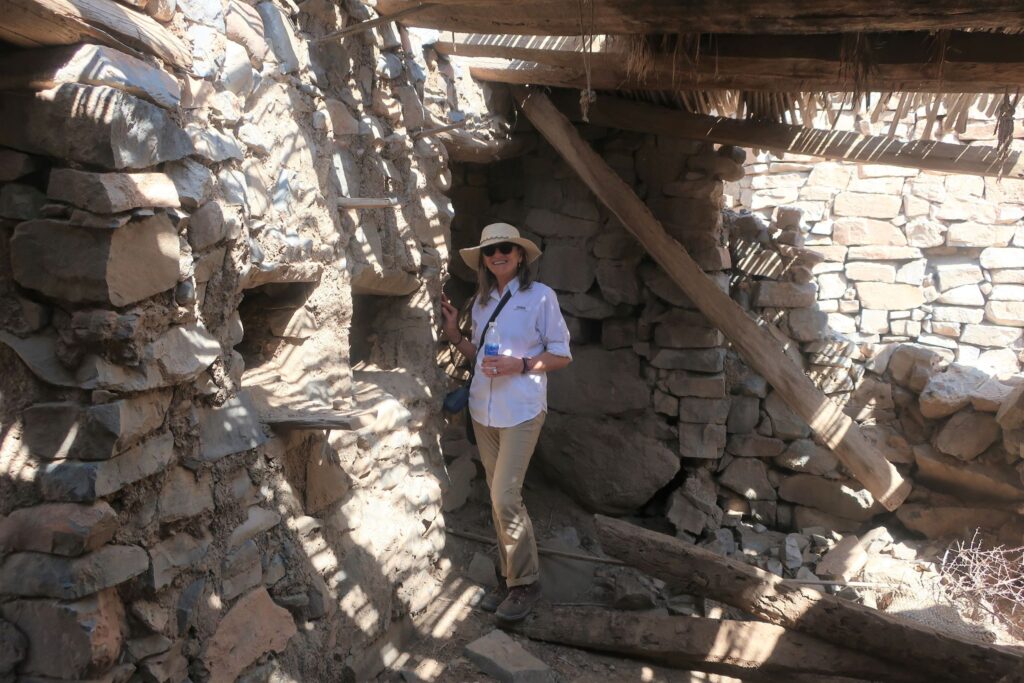
Our next stop is the ancient tombs of Al Ayn.
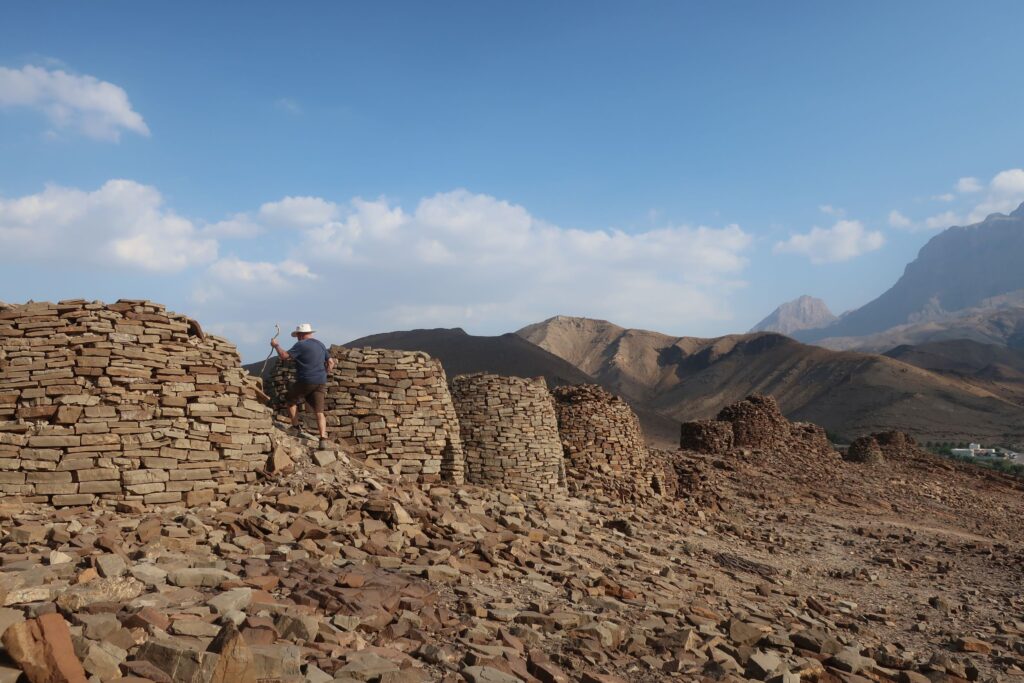
They’re supposed to be 5,000 years old. Even though they are a major historical artifact in Oman, they are extremely hard to track down.
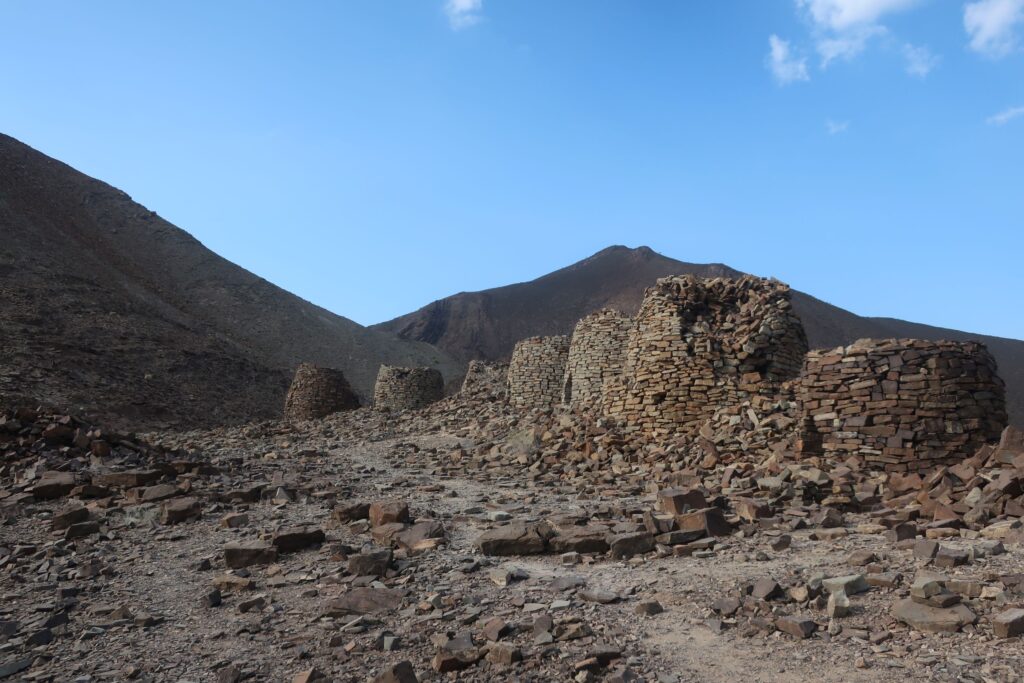
The Rustaq Loop is our next destination. This is a trio of forts that people usually take in together. In our case, we find that two of them are closed for renovations. Only the Al-Hazm fort is open for visitors. It’s pretty impressive.
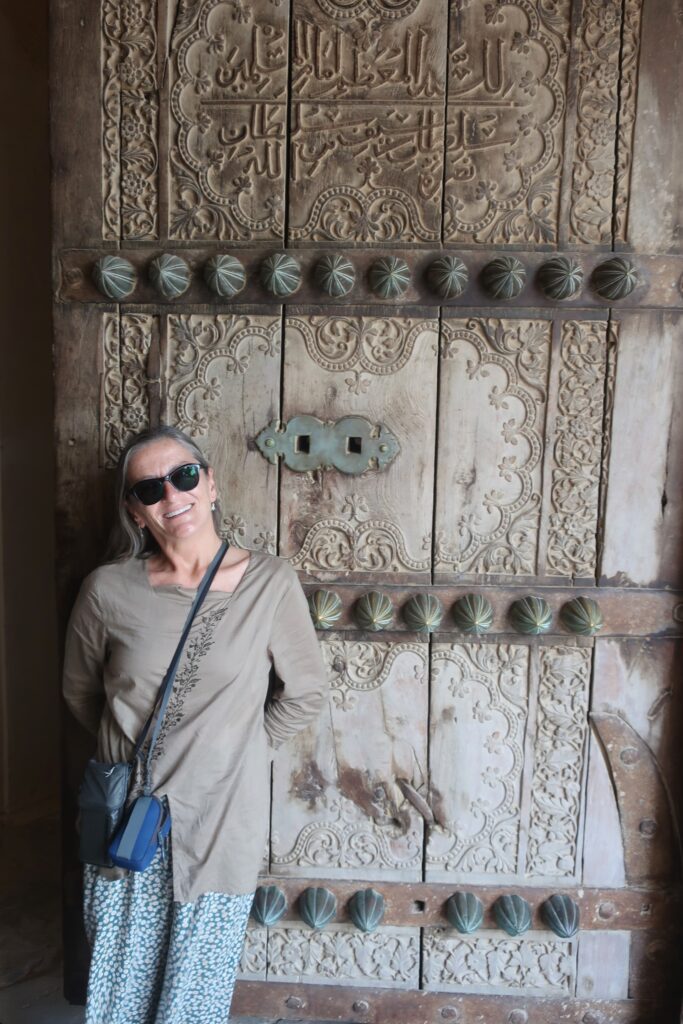
The fort was the home of the local powerful imam. This is the imam’s leisure room.
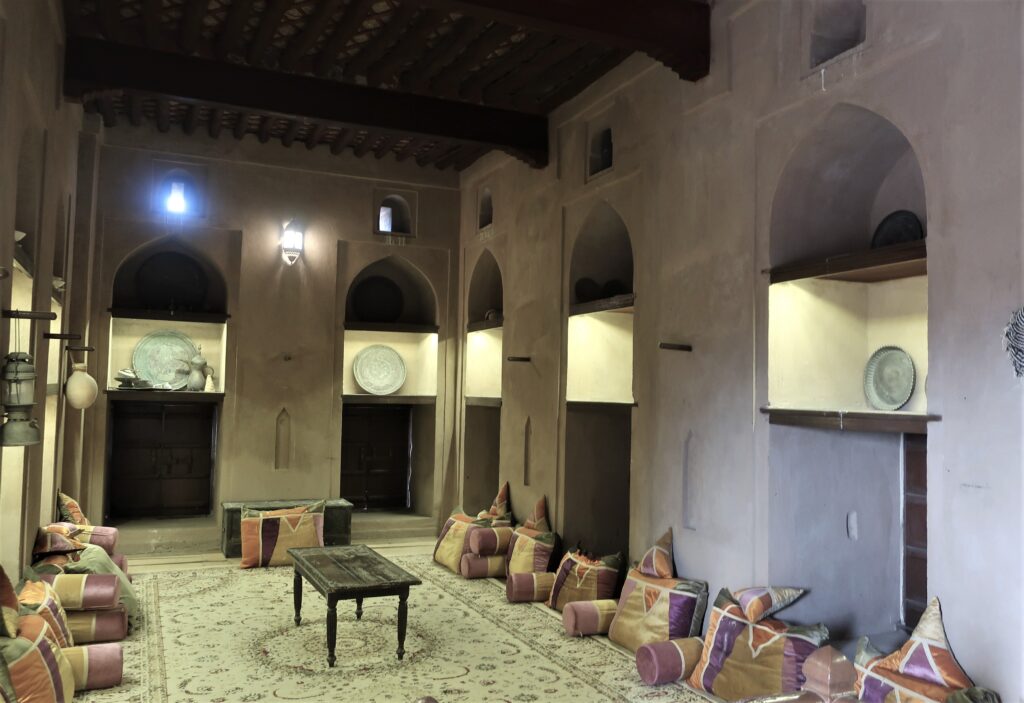
While walking around, we are followed by the imam’s cat. (So we call him.) He’s very friendly.
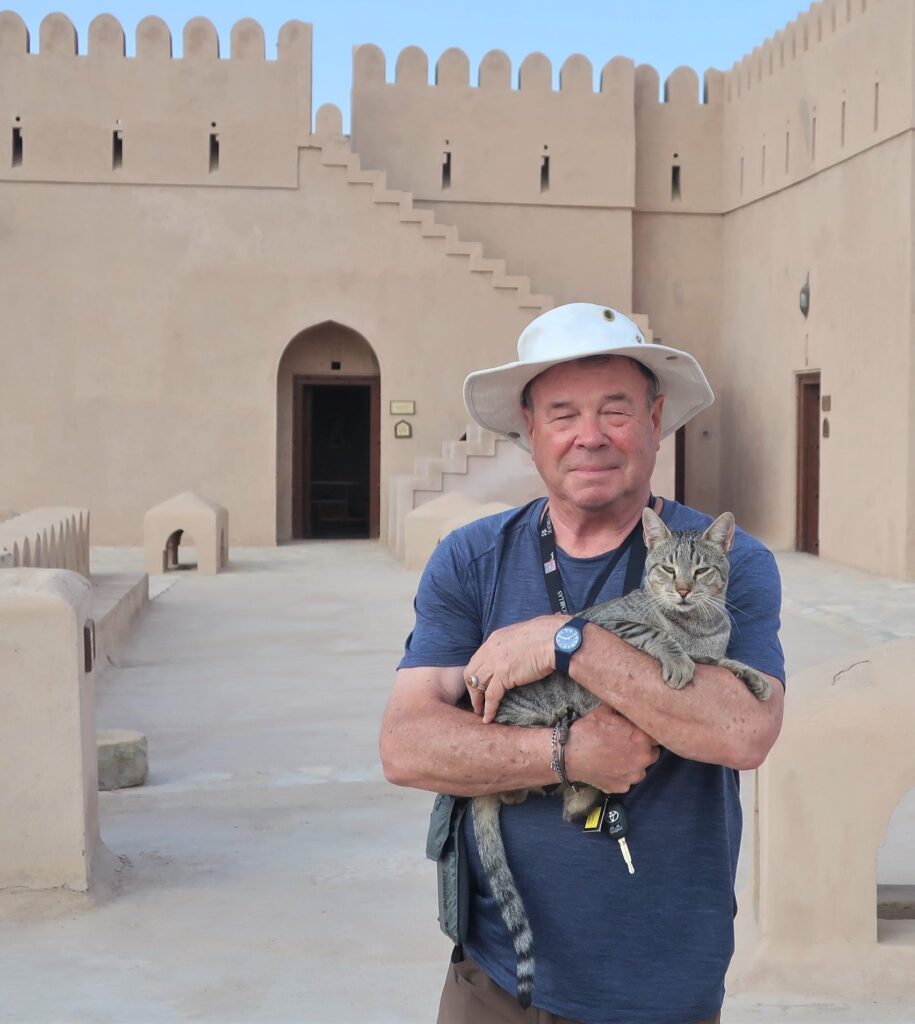
A mystery – in several regions of Oman, we pass walled areas named in English ‘old cemetery’. But inside, we see nothing but rocks. In Islam, most graves are very simple, even for eminent persons. Ostentatious grave markers are rare.
But I read somewhere – and for the life of me, I can’t find this source again – that many Omanis are followers of the Ibadi form of Islam. Some take this simplicity to a somewhat extreme degree. They inter the body and just place a rock in memory. And that’s it.
We can see that this makes sense, in a way. Almost all customs involving passed-on people are designed for the survivors, since the no-longer-living are beyond all that.
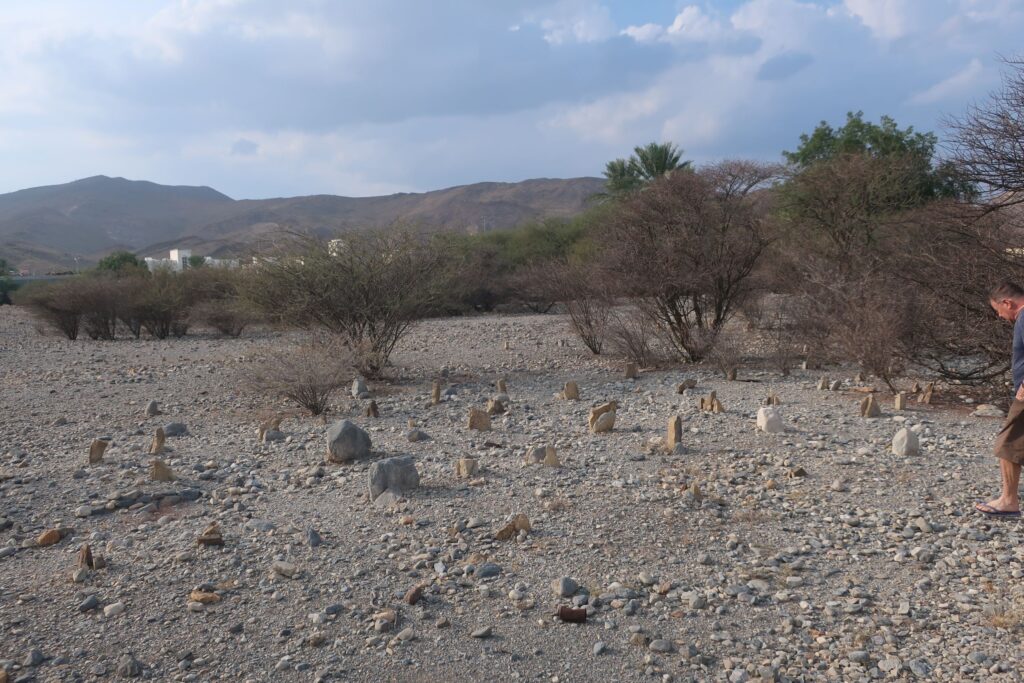
Our original plan was to visit the Omani exclave of Musendam. Because it’s detached from the main body of Oman, we have to take a ferry. The ferry itself is very modern and comfortable, but the booking arrangements are a challenge. Can’t book a ticket online. Can’t see the schedule online. Can’t pay online.
We wanted to take Lawrence with us, but by the time we acquire tickets, there is no space for a vehicle. We leave him behind for couple of days in the port of Shinas, where the ferry departs from.
Once the ferry is at sea, they open the observation decks. There are two areas: one for ‘women and families’, and one for men only (like the rest of the boat). This is the normal gender apartheid that prevails in this part of the world.
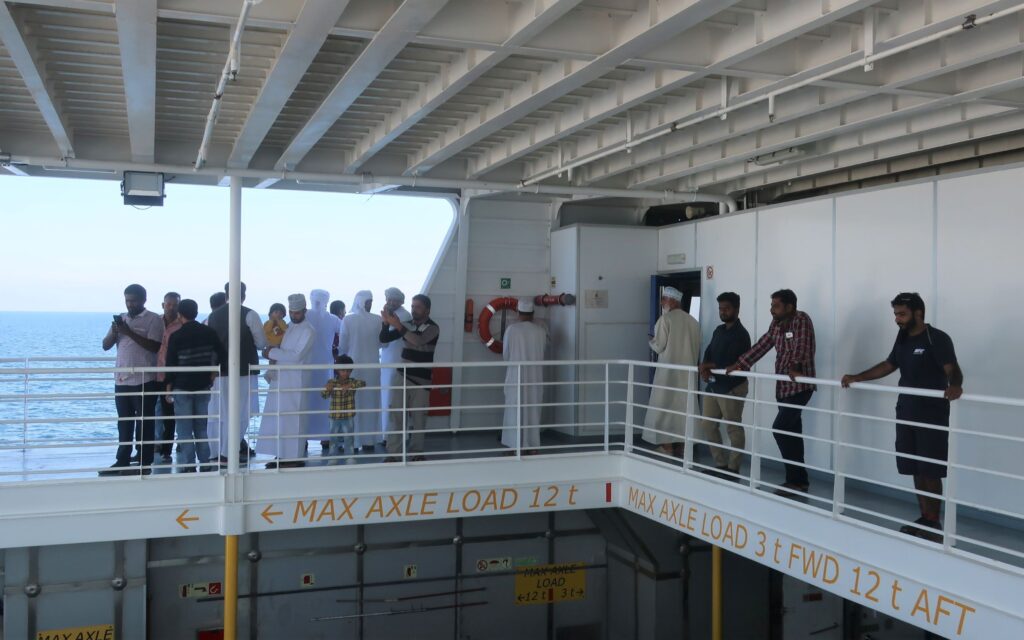
The main town in Musendam is Khasab. The next day, we take an all-day dhow cruise that includes fjord-viewing and snorkeling.
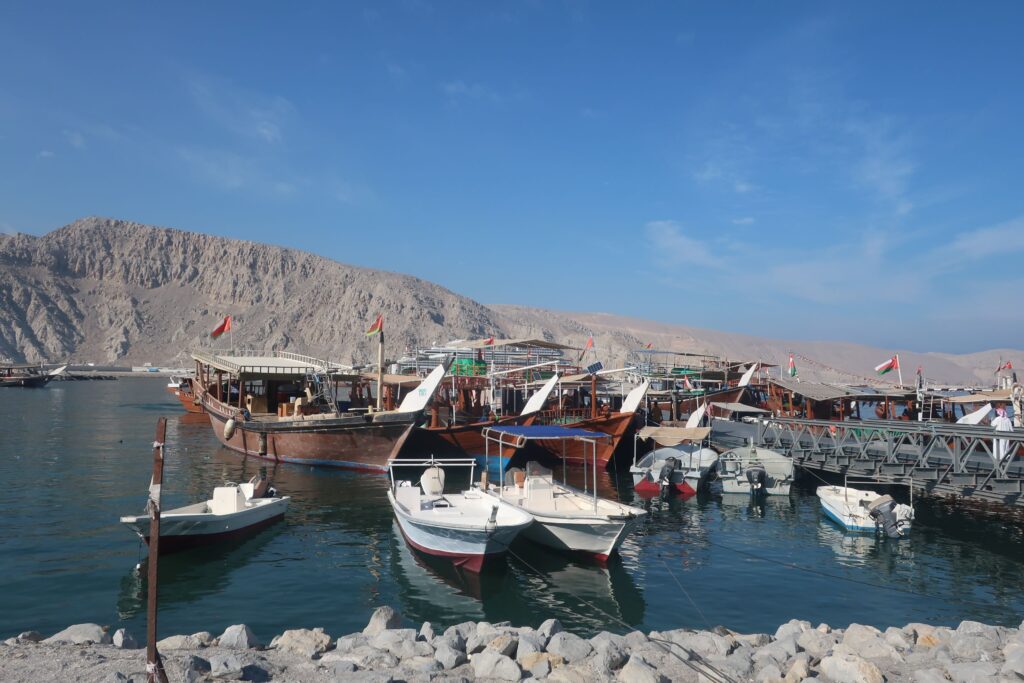
The dhow is relaxing. It’s a pleasant change to be transported around by someone else.
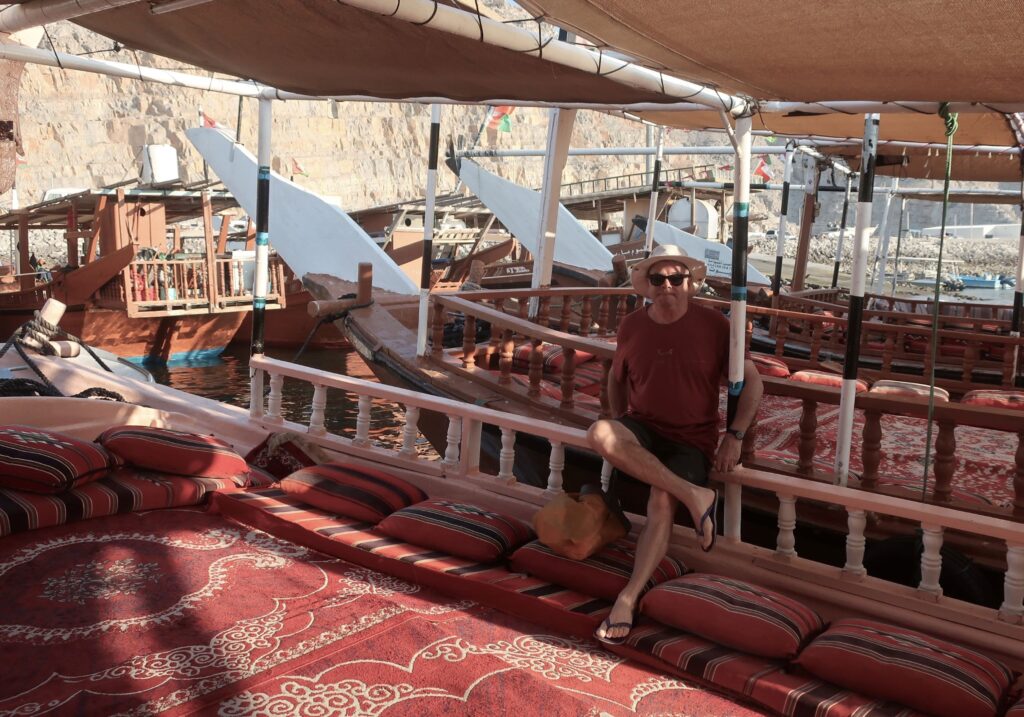
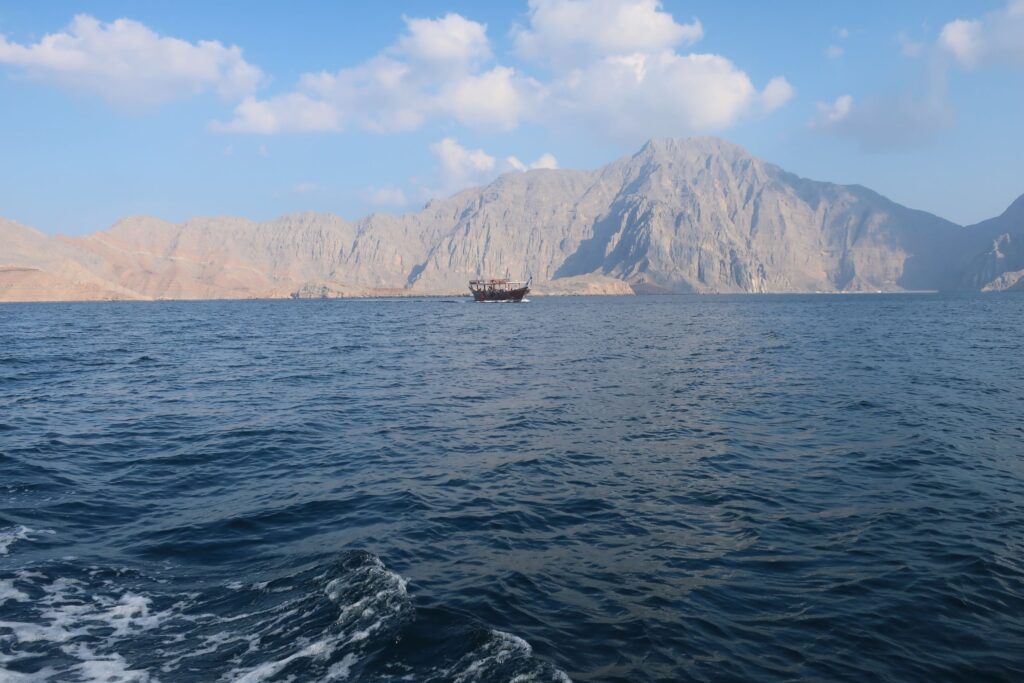
In some places, we’re accompanied by dolphins.
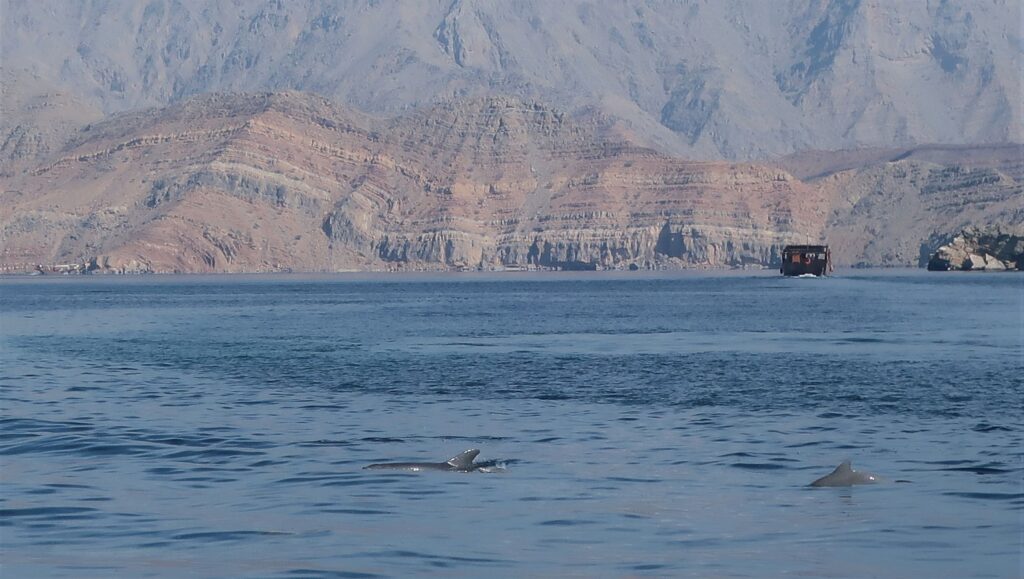
…and more dolphins.
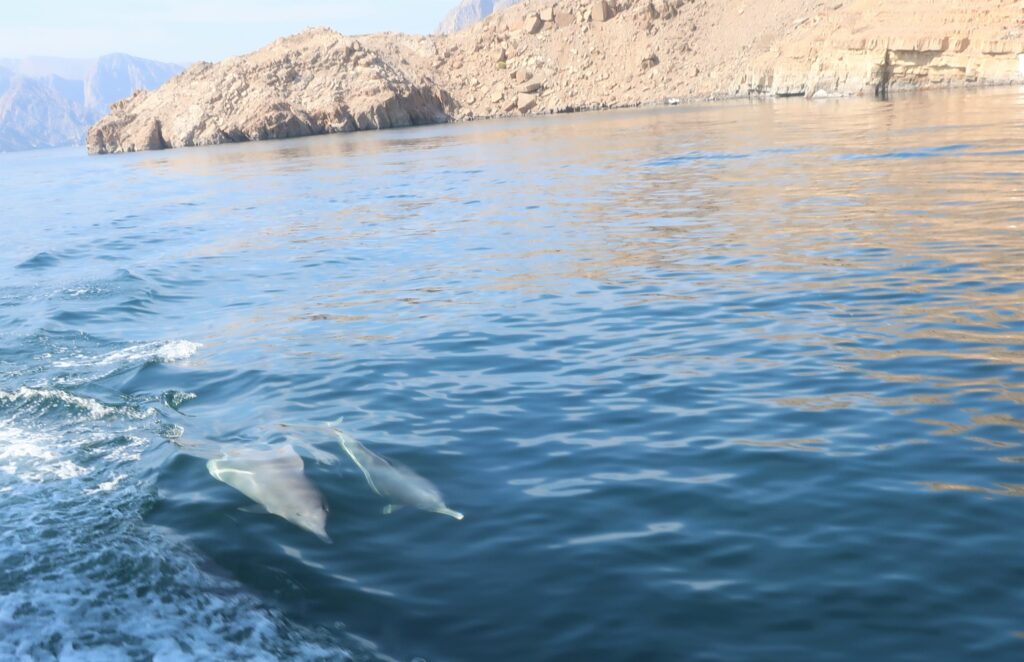
One of our snorkeling spots is Telegraph Island.
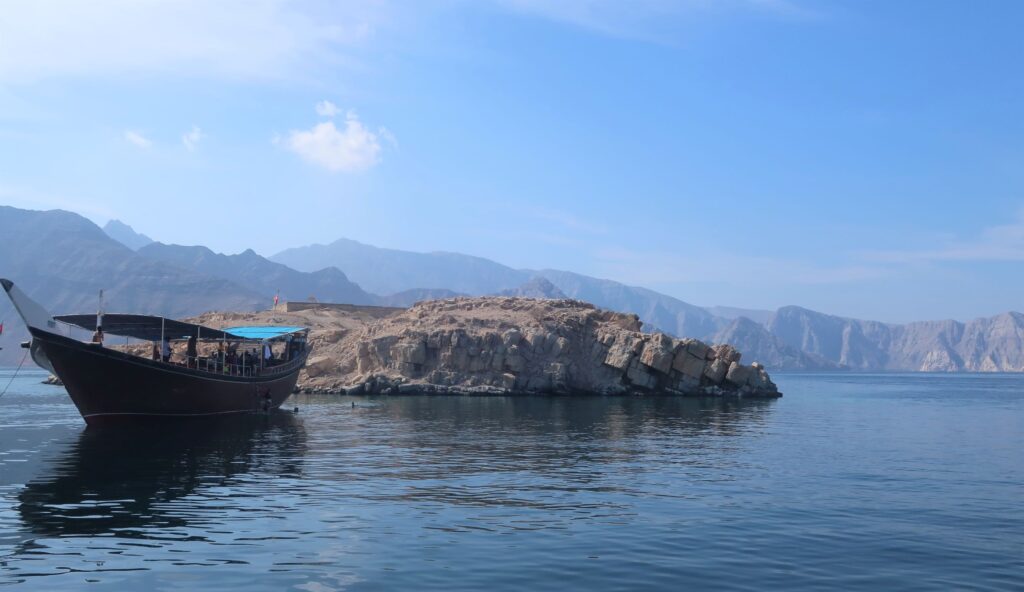
The water is emerald green and abounds in fish.
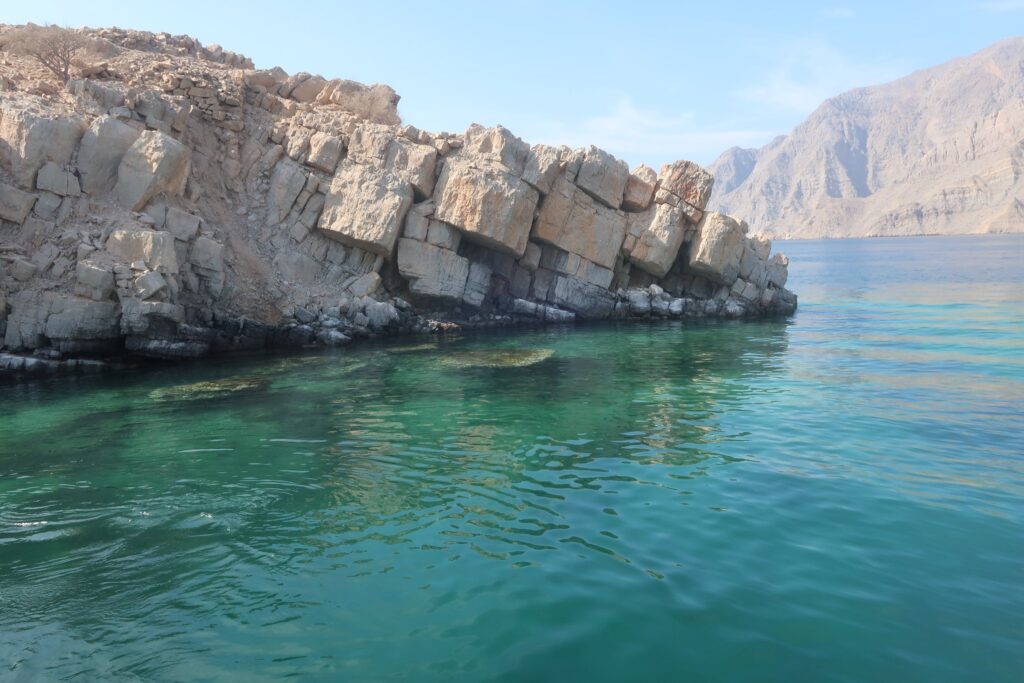
Maria, as usual, is in her element.
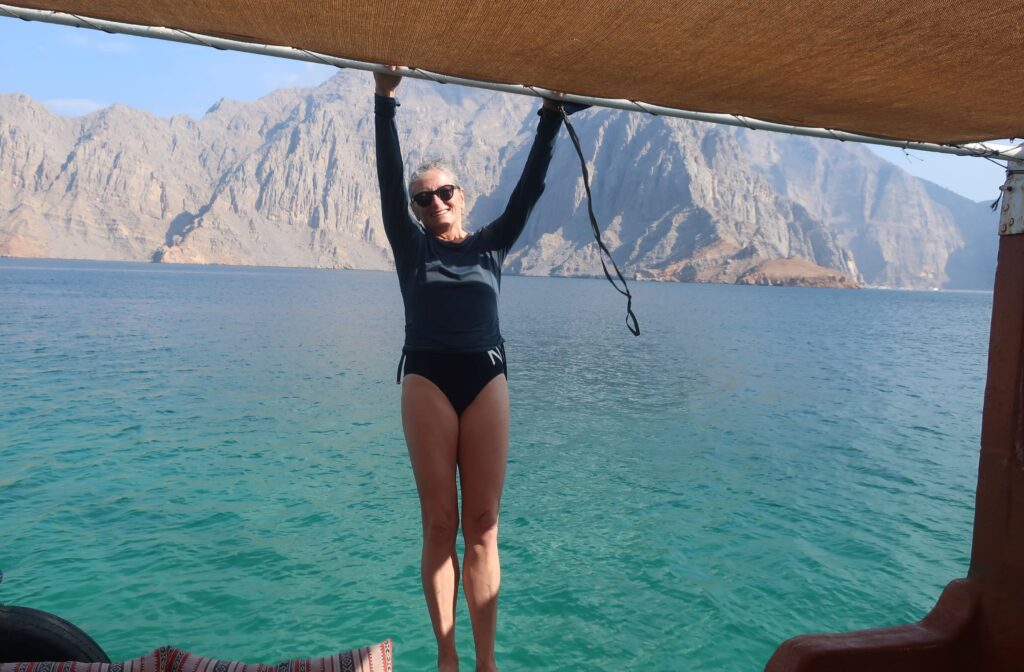
A noteworthy cultural trait in Khasab: every night, scores of smugglers stream across the Strait of Hormuz from Iran in small, speedy boats loaded to the gunwales with sheep and goats. They return with contraband like refrigerators and microwaves.
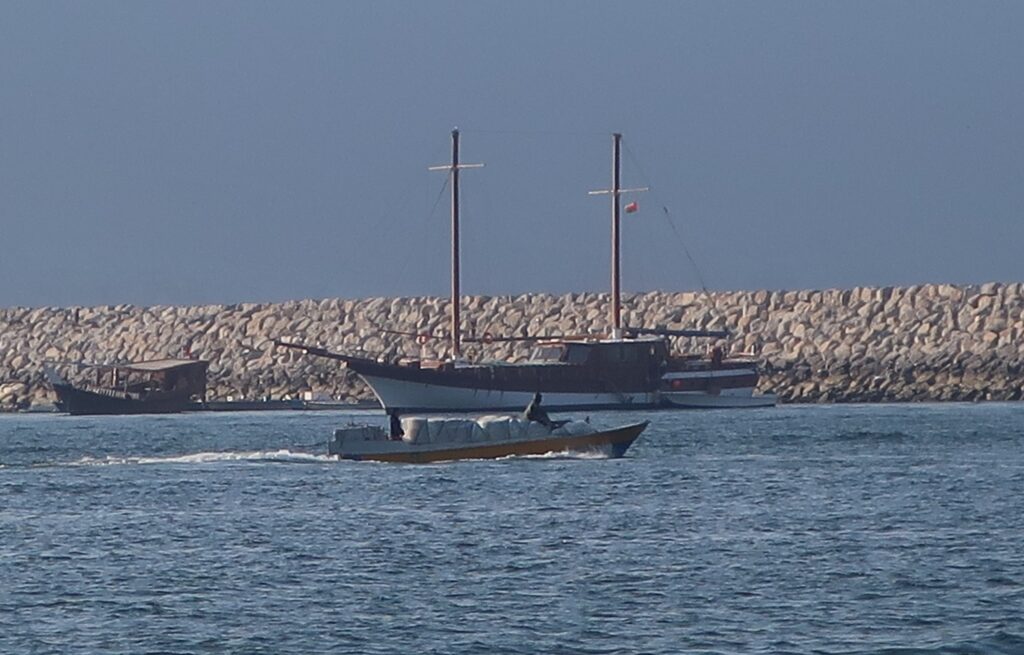
We return to the mainland on the ferry to Shinas and drive back to Muscat.
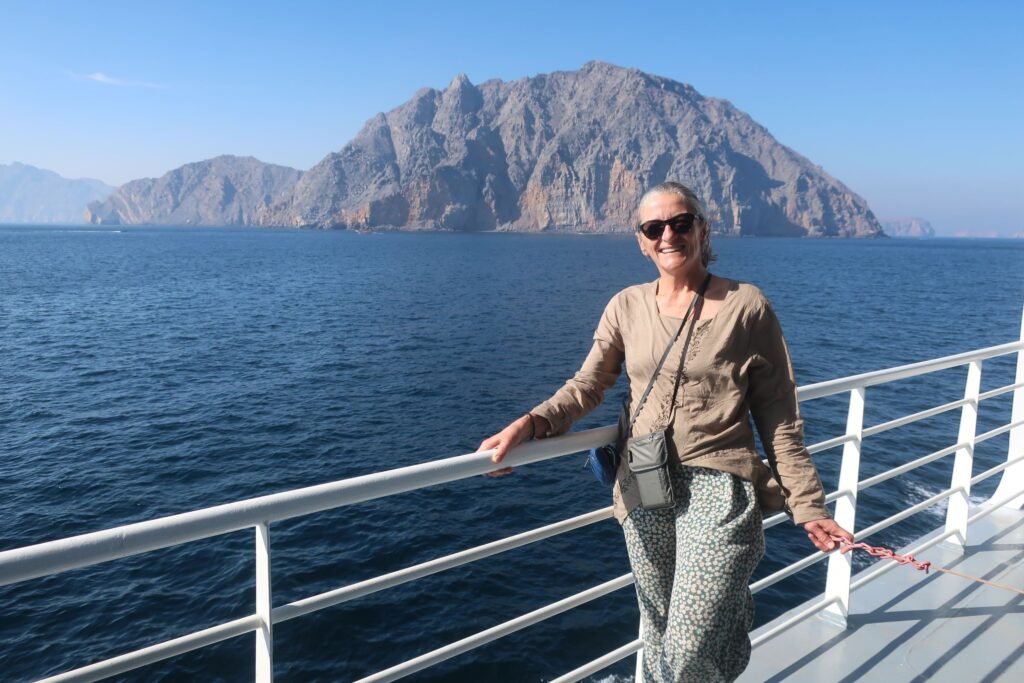
Sight or Insight of the Day
After nearly a month in Oman, it’s time to depart. We spend the last few days in Muscat again, where we visit the extravagant Sultan Qaboos Grand Mosque.
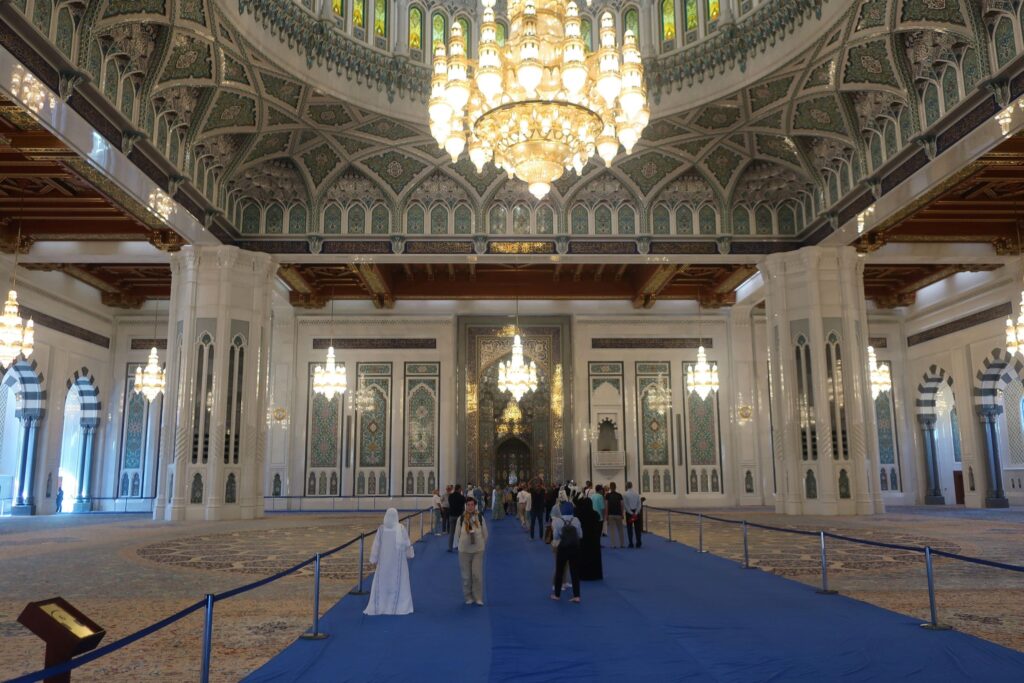
On our last day, we take a day trip to the nearby Dimaniyat Islands.
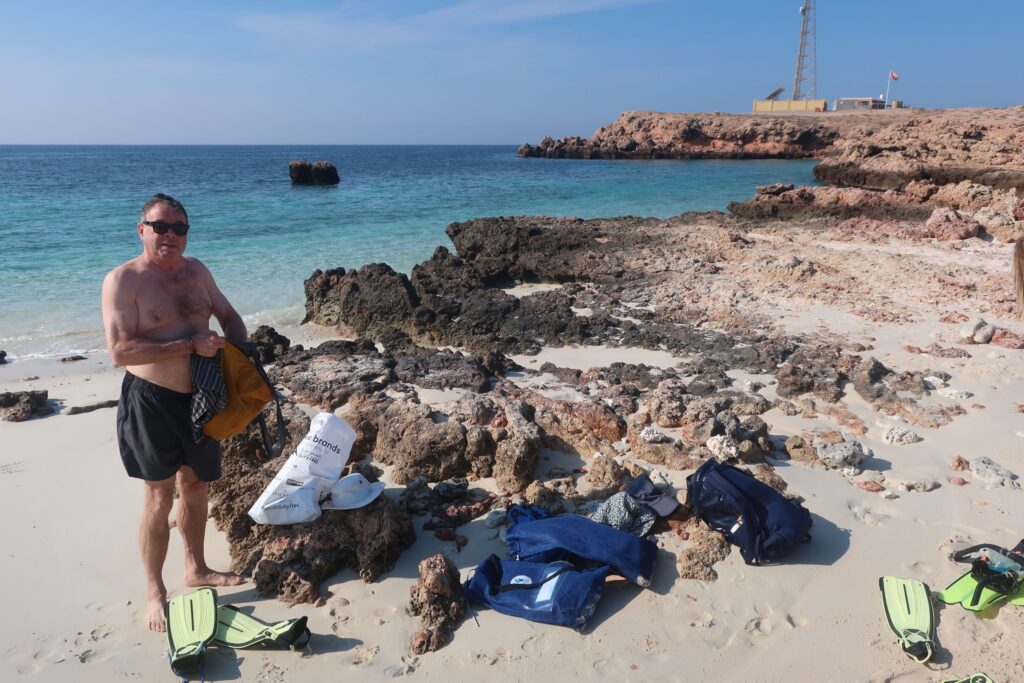
These islands have some of the best snorkeling we have seen since the island of Sulawesi in Indonesia. The absolute best part is the sea turtles! We see at least half a dozen, gracefully floating around and wafting to the surface just past our noses.
We’ve really enjoyed our time here. From a brief stopover a few years ago on our way to Iran, we thought Oman looked like an attractive place to visit. And so it proved.
With a heavy heart, we return Lawrence to the car rental office. We’ve travelled almost 5,000 kilometres together. He joins Uncle Joe, Shorty, and Cardashian on our list of faithful automotive companions for this trip.
